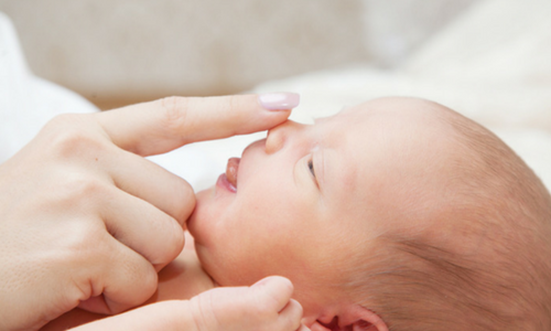One of the biggest milestones in a baby’s life is taking his first steps. From preparing the place to playing, check out 5 tips that will encourage your baby to walk.
Taking his first steps is a very important milestone in a baby’s life. For this, your little one must coordinate his main muscle groups at once: arms, trunk, legs and feet. As the 10th month approaches, parents are already looking forward to knowing how to encourage their baby to walk. With that in mind, here are some tips that will help you with this task. Be sure to check them out!
When the baby starts walking
Generally, the baby starts walking around his first year of life. He often uses anything to help him steady, whether it’s a sofa, a bookcase, or a chair. But, as with all milestones, this time can vary.
Some start walking later than expected, and it may be necessary to encourage the baby to walk. Try not to worry so much about this time and instead make your practice easier. Sooner or later, your little one will make it, and from then on, nothing will stop him!
Tips to encourage a baby to walk
For your baby to stand up straight, he must have sufficient muscle strength in his legs, hips and trunk. This strength will come from everyday movements, such as sitting, crawling, and getting up.
We separate some tips for you to encourage a baby to walk. Check them out:
Eliminate the risks:
When a baby is crawling around the house, he needs space to move around freely, and lots of furniture along the way can bother him. Thus, the frustration can be assimilated by the child, leaving him unmotivated to try again.
If your chairs are light and easy to tip over, try moving them to corners or replacing them with items that won’t tip over. If when pulling a chair, it falls on top of your baby, it can hurt and scare him. The same safety idea applies to corners your baby might bump into. Therefore, protect the areas that can hurt him. Also, to avoid slipping, do not leave objects on the floor.
Replace fear for encouragement:
Encouragement is the best motivator. Everyone likes to be applauded, so use this technique to make your baby stand up more. Be overly encouraging so he really understands that standing is wonderful.
It’s normal for you to be afraid of falls and injuries, but accept it: they happen. It is important that, in the face of all this, you maintain a calm attitude. Provide warmth and support if the baby falls and cries. Just be alert if there is vomiting or lethargy. These indicates that you need to call the doctor.
Leave the baby barefoot whenever possible:
Many pediatricians recommend that you keep your baby barefoot whenever possible, and the weather is favorable. By feeling the floor, babies adjust their balance as needed, as different surfaces require the use of different muscles and posture. Your baby can’t feel the floor while wearing shoes, and this makes the learning process difficult. In the cold, you can protect your little feet with non-slip socks.
Stimulate baby’s movements:
You can encourage your baby to squat down and move around more by placing toys out of his reach, allowing him to cross greater distances. This increases your baby’s resistance to standing and strengthens the hip and thigh muscles. Over time, they will learn to balance and shift weight from one foot to another.
Offer the right support:
If you support the baby standing by extending your arms, know that you are not alone. Most parents think this is a good way to offer support. Unfortunately, this is not true, as it causes your baby to lean forward. If you try to walk with him, you will notice that he walks very fast. This is because he is off balance, trying to reach his center of gravity. Instead of holding by the little hands, focus your support on the baby’s trunk. This will keep his feet firmly on the ground rather than bent over, helping him build his muscle and bone strength.
Can a baby use the walker?
There is no consensus in the scientific community on the use of walkers. However, studies have shown that the walker can cause changes in the child’s walking pattern because it messes with the center of gravity and causes inadequate contact between the foot and the floor.
Remember that the gravitational center is the essence of walking: when we walk, the arms learn to move in sync. However, on the other hand, studies have not found differences in the movement of children who use walkers and those who do not.
What is known is that it is good to avoid walkers, as they can cause serious trauma if not used in safe places. But as there is no consensus on the walker, it is best to stick with the old-fashioned way.
Did you like our tips to encourage a baby to walk? Leave your opinion in the comments below.
Also read our article on food selectivity.



